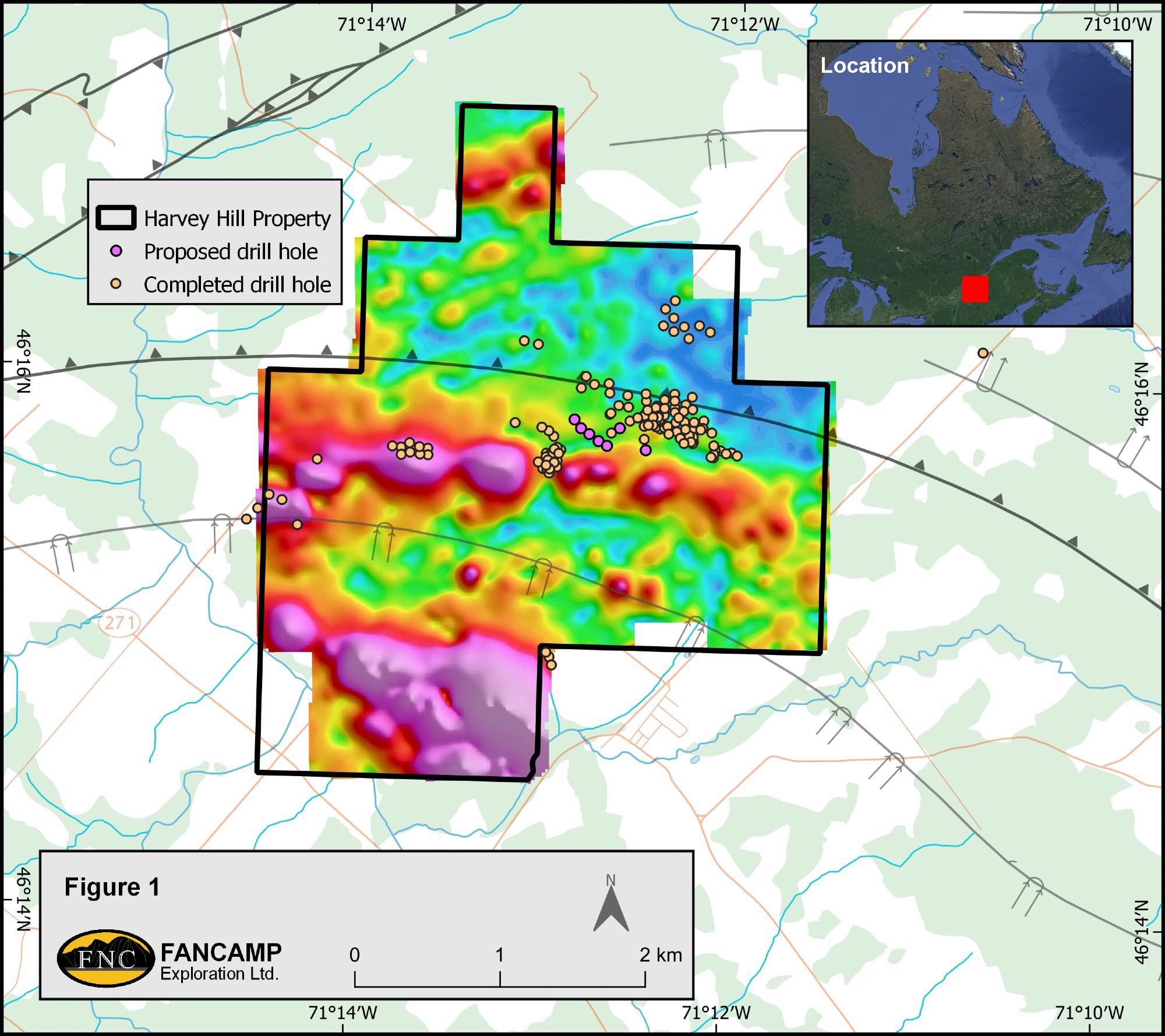Fancamp Exploration Ltd, a Canada-based mineral exploration company, declared a 2,000-m drill program that has been scheduled to happen in March 2022 on its Harvey Hill exploration project.
 Harvey Hill Drill Program. Image Credit: Fancamp Exploration Ltd.
Harvey Hill Drill Program. Image Credit: Fancamp Exploration Ltd.
Fancamp and MIRA Geoscience have finished the construction of a 3D model of the Harvey Hill project. The 3D model indicates that the mineralized lenses are linked to overturned hinge fold.
There are two objectives on which the drilling will be aimed: possible thickening of the mineralized horizon in the hinge fold and the chance of extension of the copper mineralization from Harvey Hill towards the Foy Zone located nearly 400 m NW.
Here, copper gold mineralization has been explained, such as 3.16 g/t Au, 10.1% Cu, 11.6 g/t Ag, 0.12% Zn, 0.2% Ni, 0.32% Cr, 175 ppm Co (MB 88-21) from chosen grab samples taken in the vicinity of the abandoned exploration shaft (MB 88-22).
The 2022 drill program will follow up on the 80-hole 2019–2020 drill programs. The best drill hole sectioned was in hole DDH HH19-26 which intersected 1.77% Cu over 9.0 m at 120 m down hole. This intersection is postulated to be located mid-distance between the Foy zone and the main mineralized zone of Harvey Hill.
The Corporation’s Harvey Hill project is known to be a past-producing, copper and precious metal-bearing project, with outstanding road access, situated nearly 20 km NE of the town of Thetford Mines in the Québec Appalachian.
The mine was found in the mid-1800s and functioned intermittently until its final closure in the mid-1980s. Past production has been reported at 450 kt of 1.22% Cu and 2.8 gpt Ag between 1973 and 1976. This does not include a small amount of production between 1858 and 1903 (MERN DV 85-08).
Besides Harvey Hill, base metal occurrences are recorded at Nutbrown (1 km WNW of Harvey Hill) and Foy (400 m WNW of Harvey Hill) on the Fancamp property.
Argillic sedimentary rocks underlie the area of Harvey Hill, intermediate to mafic volcanic rocks, and talc schist of the Humber zone in the Quebec Appalachians. Three zones of Cu + Ag mineralization take place within powerful carbonate + sericitic altered argillic schists, with quartz veins and veinlets. Chalcopyrite, chalcocite, and bornite are observed in mineralized intervals.